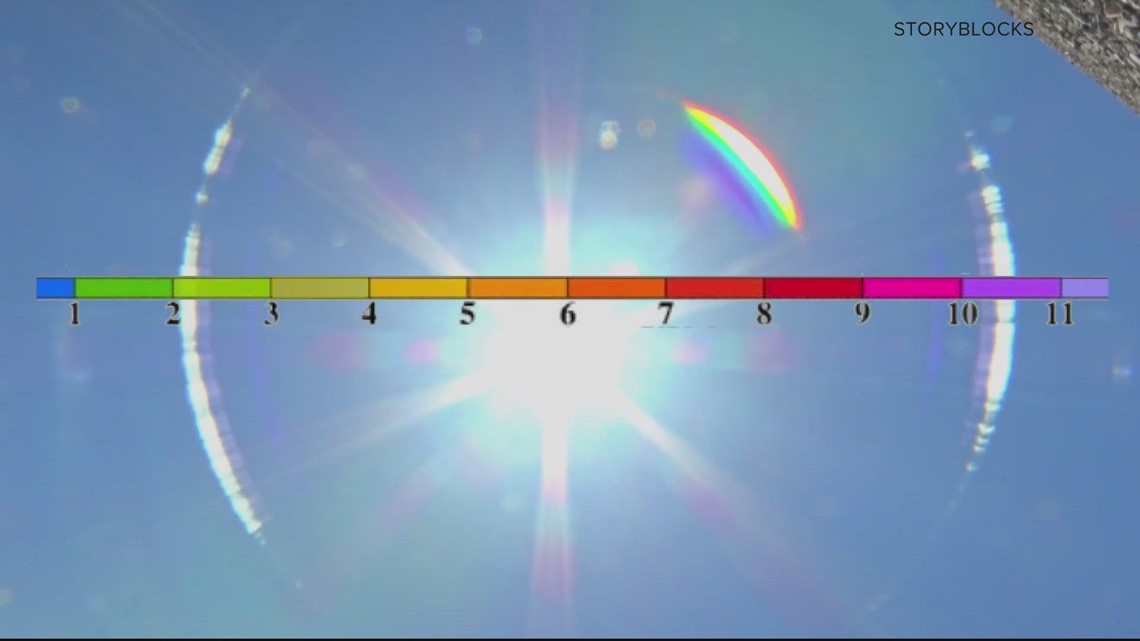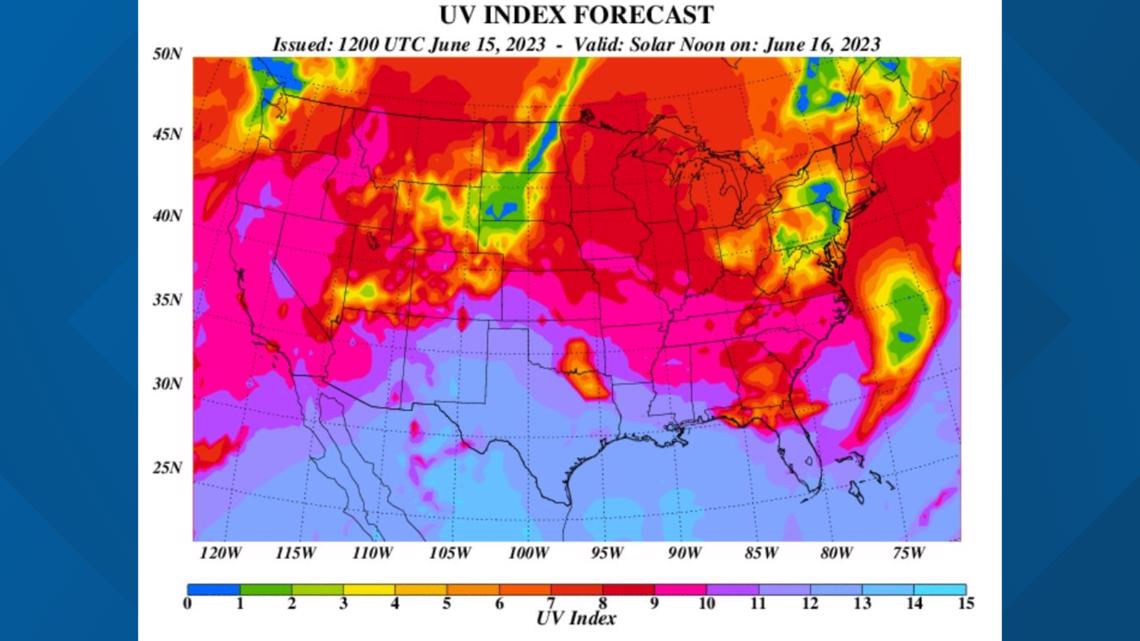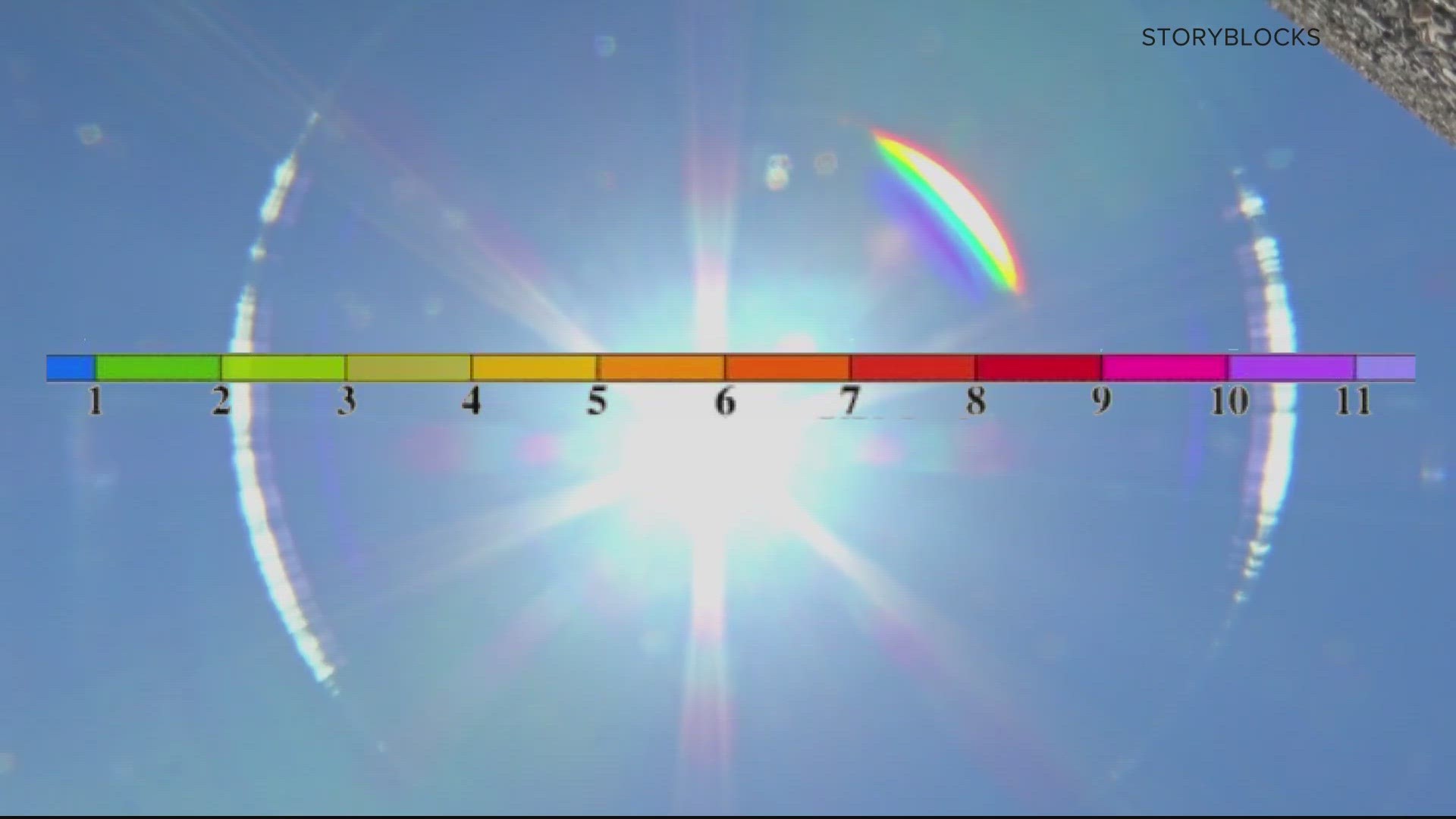WASHINGTON — When you have big plans, you know to check out the weather forecast to find out the temperature and rain chances — but how about planning your summer fun around the strength of the sun?
THE QUESTION:
How do you use the UV scale for sun safety?
THE SOURCES:
- The National Oceanic and Atmospheric Administration (NOAA)
- The EPA
WHAT WE FOUND:
NOAA is part of the National Weather Service. Just like precipitation and temperature, it tracks ultraviolet (UV) radiation in locations across the U.S.
“Typically, that forecast is made for solar noon of the next day,” said NOAA meteorologist Laura Ciasto. “Really when the sun is going to be highest in the sky. So when we are expecting the UV radiation and likely to be strongest.”
The strength of those rays is measured using the UV Index:
- UV Index number 2 or less: Exposure level low
- UV Index number 3 to 5: Exposure level moderate
- UV Index number 6 to 7: Exposure level high
- UV Index number 8 to 10: Exposure level very high
- UV Index number 11+: Exposure level extreme


The EPA has a free mobile app where you can enter your zip code and find the hour-by-hour UV forecast where you live, and you can always check the UV forecast locally and nationwide on their website.
The UV levels on any given day are based on a few factors, including cloud cover, ozone layer thickness, reflection from bright surfaces like sand and snow, elevation, and pollution.
“The UV radiation is kind of looking for the path of least resistance. So the less it sort of encounters on the way to the surface, the higher it's going to be," Ciasto said.
Warm days, glowing evenings — the summer sun brings a lot of good to the season, but it also means stronger UV rays reaching earth’s surface. Places closer to the equator, and where the earth’s summertime tilt shorten the distance to the sun, log higher UV levels.
“In the summer when we typically see the UV index to be higher, that is partly due to the fact that the way the earth's sun geometry is, that the sun is more overhead," explained Ciasto.
A forecast on the low end of the scale — 0 through 5 — means fewer damaging rays with less risk for most people, according to NOAA, which explains that scores of level 6 or greater indicate “significant damage” from the sun can happen quickly.
“When you're getting into the what we call the extreme, the purple values of our U.V. index maps, that's when we're recommending that you just stay indoors in the shade as much as you can,” Ciasto said.
People who are more likely to get sunburn, or are on medications or use creams that make them more sun-sensitive, might experience worse effects at lower UV levels.


The EPA, warning of the known risk of health consequences of sun damage, encourages people to limit their time outside between 10 a.m. and 4p.m.. the hours of the day with the strongest UV potential.
“And not just our skin, but our eyes,” reminds Ciasto. “We can get sun damage and cataracts from the UV radiation and that has nothing to do with how light or dark your skin is.”
Remember, you don’t have to burn to experience sun damage. Dermatologists recommend lathering on sunscreen even on cloudy days in the summer, and wearing sunglasses to prevent long-term UV damage to your eyes.

